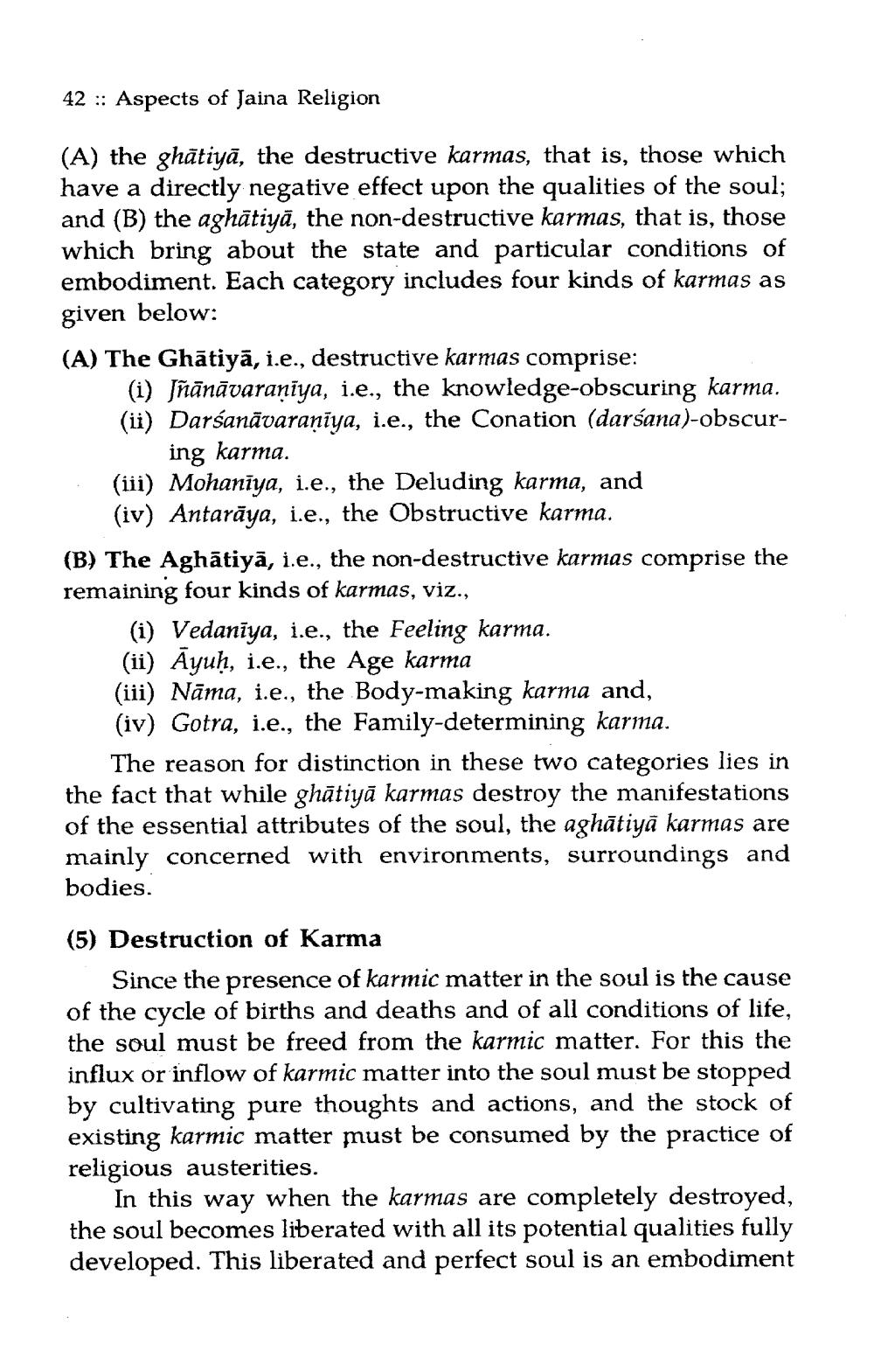________________
42 :: Aspects of Jaina Religion
(A) the ghātiyā, the destructive karmas, that is, those which have a directly negative effect upon the qualities of the soul; and (B) the aghātiyā, the non-destructive karmas, that is, those which bring about the state and particular conditions of embodiment. Each category includes four kinds of karmas as given below: (A) The Ghātiyā, i.e., destructive karmas comprise:
(i) Jñānāvaranīya, i.e., the knowledge-obscuring karma. (ii) Darśanāvaraṇīya, i.e., the Conation (darśana)-obscur
ing karma. (iii) Mohanīya, i.e., the Deluding karma, and
(iv) Antarāya, i.e., the Obstructive karma. (B) The Aghātiyā, i.e., the non-destructive karmas comprise the remaining four kinds of karmas, viz.,
(i) Vedaniya, i.e., the Feeling karma. (ii) Ayuh, i.e., the Age karma (iii) Nāma, i.e., the Body-making karma and, (iv) Gotra, i.e., the Family-determining karma.
The reason for distinction in these two categories lies in the fact that while ghātiyā karmas destroy the manifestations of the essential attributes of the soul, the aghātiyā karmas are mainly concerned with environments, surroundings and bodies.
(5) Destruction of Karma
Since the presence of karmic matter in the soul is the cause of the cycle of births and deaths and of all conditions of life, the soul must be freed from the karmic matter. For this the influx or inflow of karmic matter into the soul must be stopped by cultivating pure thoughts and actions, and the stock of existing karmic matter must be consumed by the practice of religious austerities.
In this way when the karmas are completely destroyed, the soul becomes liberated with all its potential qualities fully developed. This liberated and perfect soul is an embodiment




